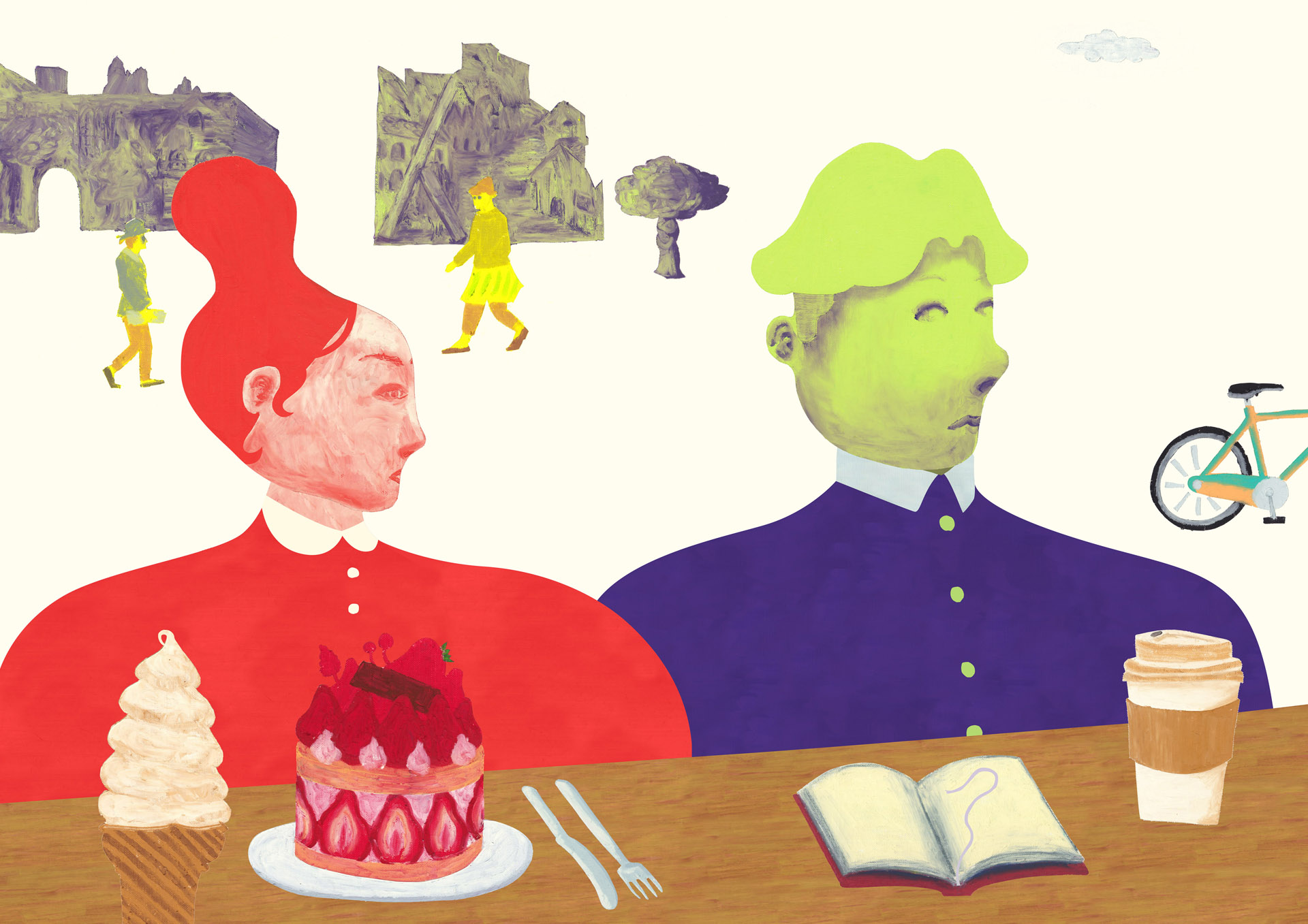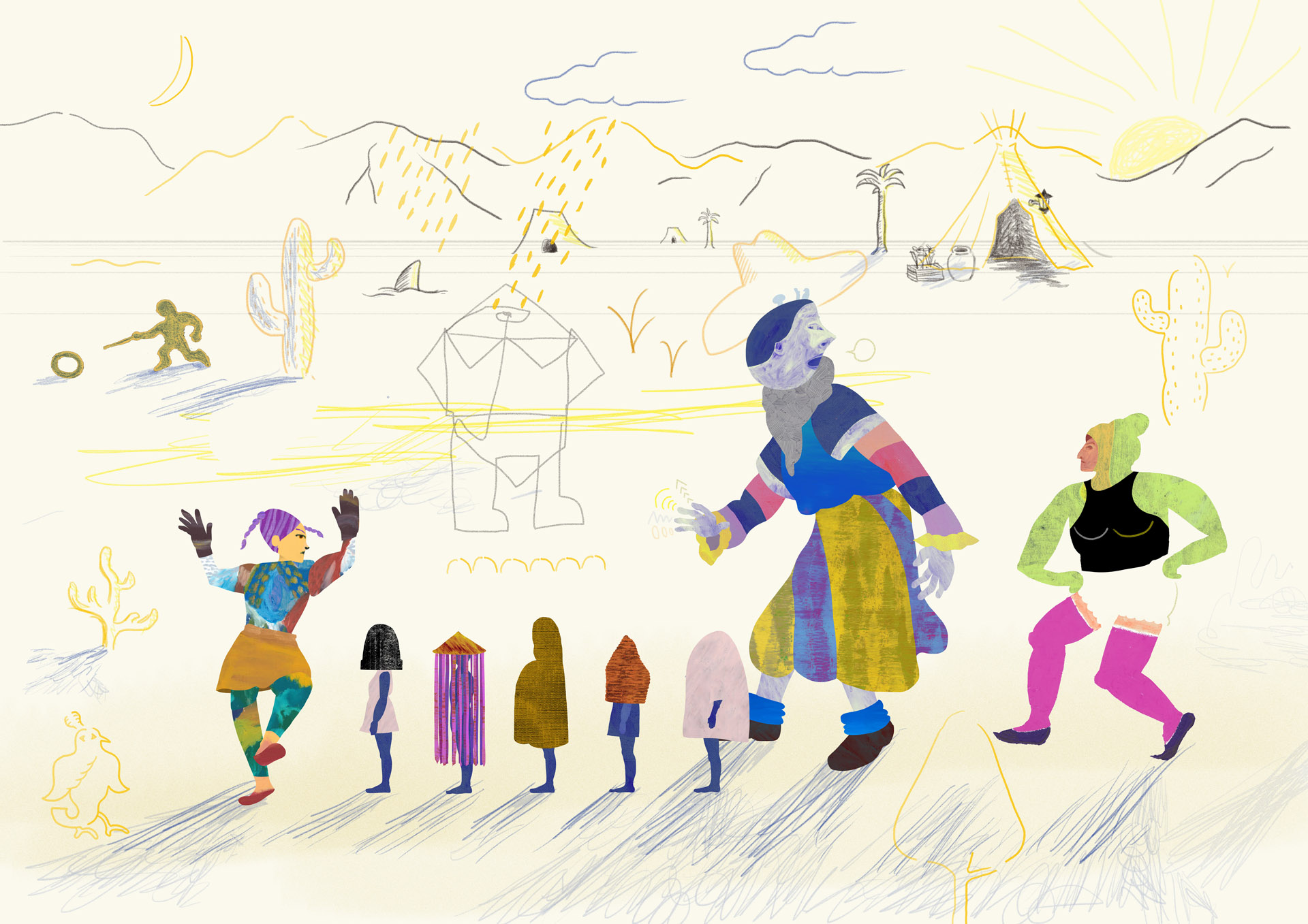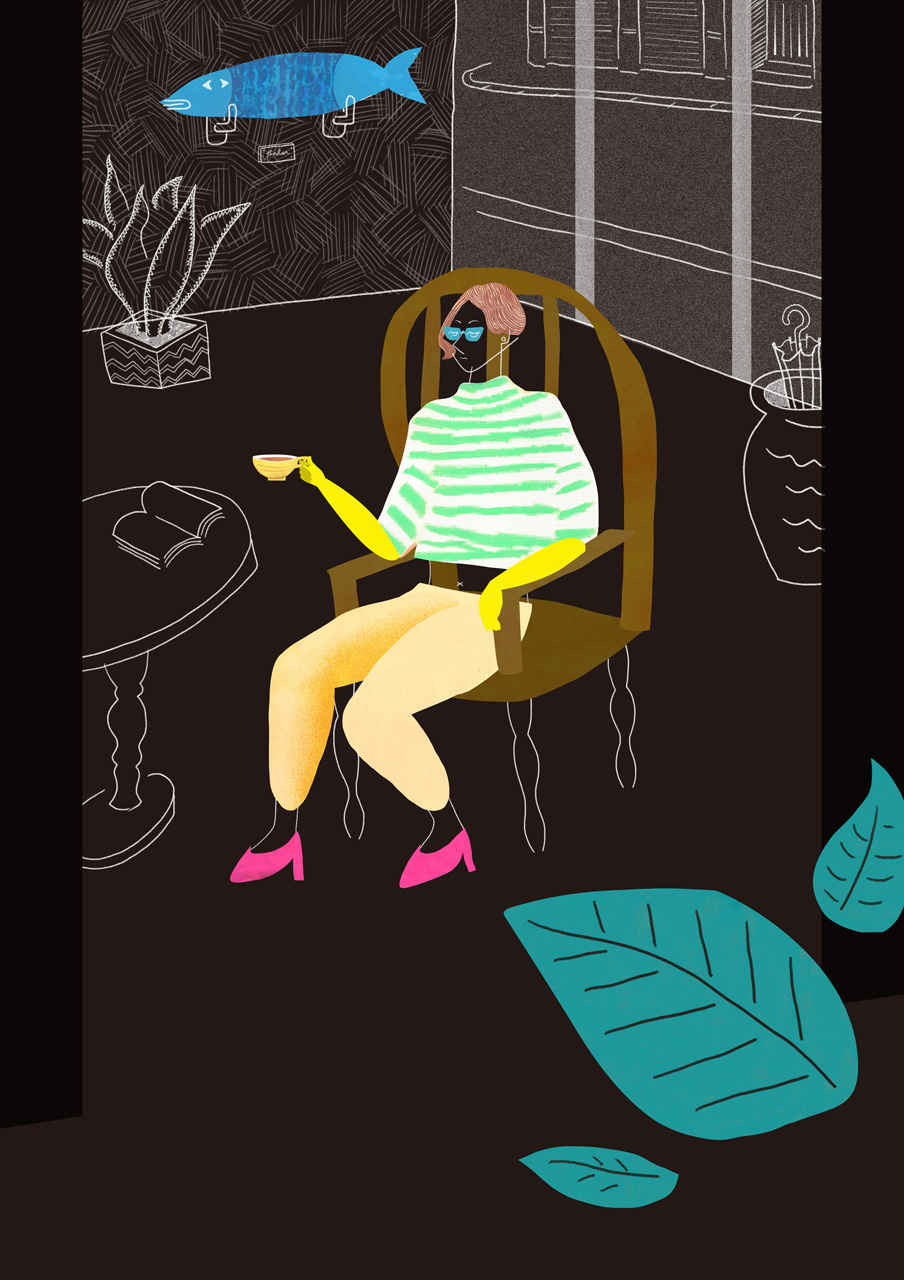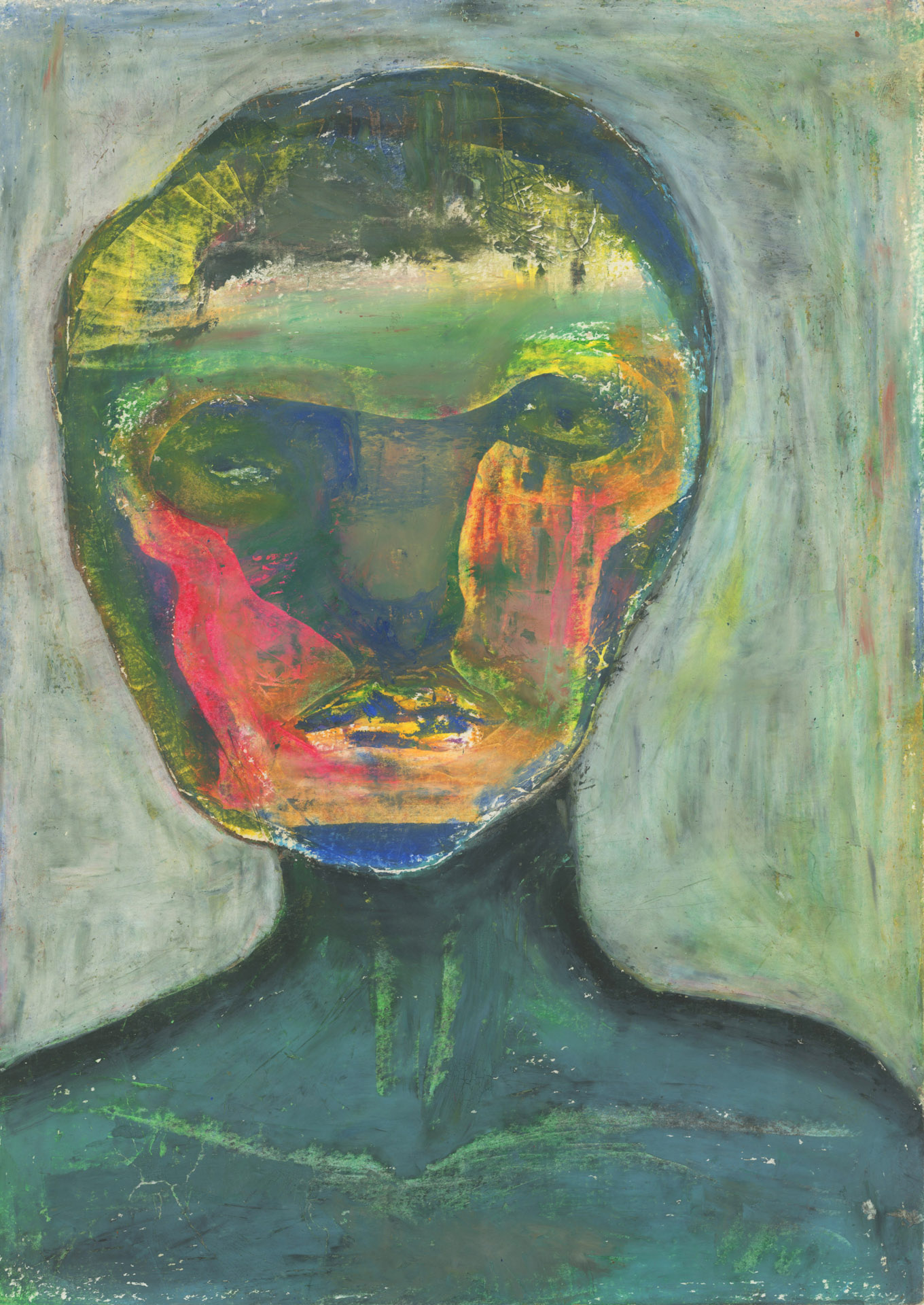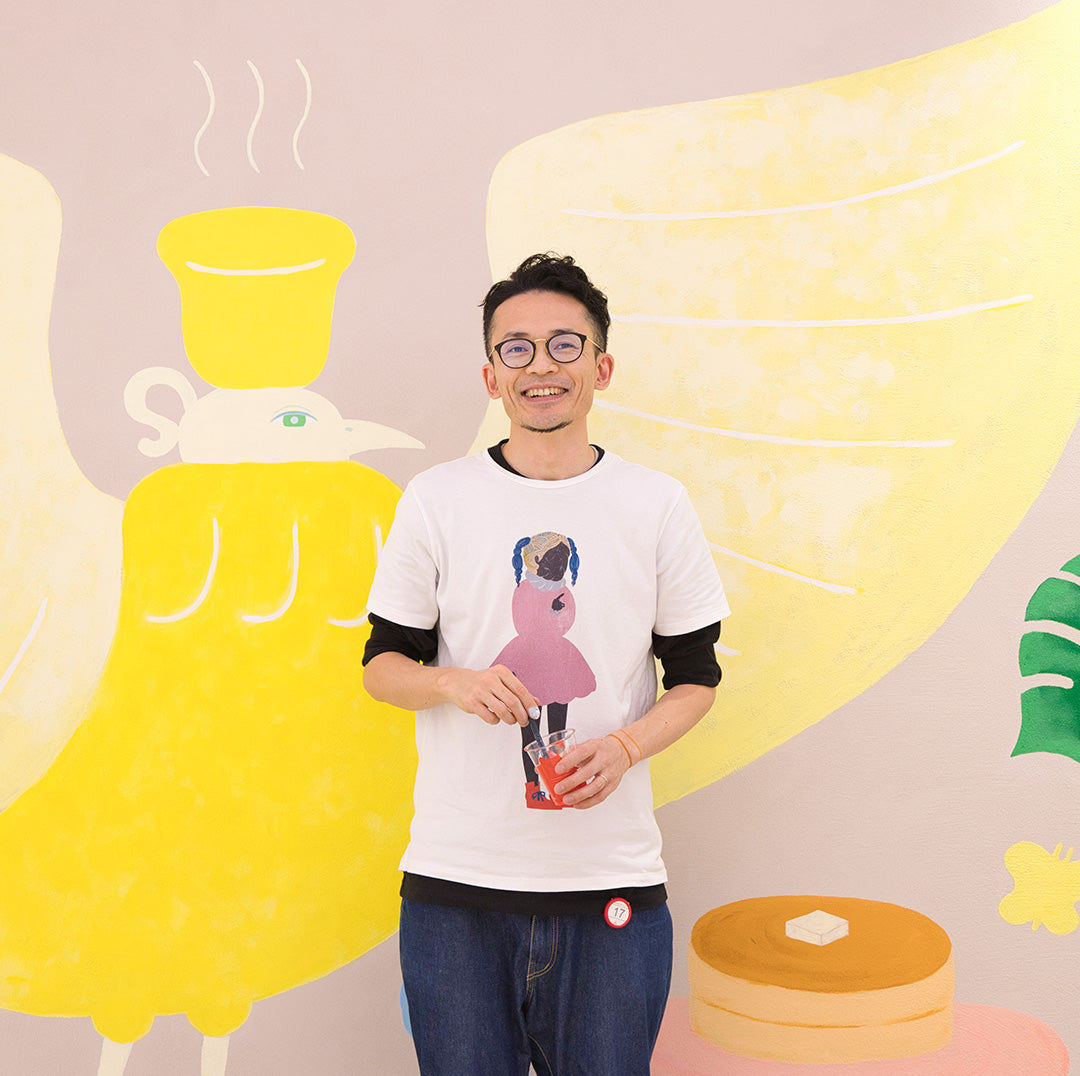Disturbing colors that challenge common sense
The world of Minami Keita's paintings, colored with crayons and oil pastels, is light-hearted yet evocative of an indescribable sense of disquietude. This will be his first solo exhibition in Tokyo in 14 years.
Minami's father is a picture book author, and she has been familiar with art since she was a child. When she was around 20 years old and attending the Setsu Mode Seminar, she became fascinated with drawing with crayons. Until then, paints didn't suit her, and she only drew monochrome portraits with pencils, but being able to express colors directly from her physical senses without any tools between her body and the picture, Minami says, helped her to release the discomfort in life and the frustrations she had felt up until then.
"School in particular stripped away individuality, and I felt like I was being made to fit in with a standard. 'Normality' and 'common sense' may be necessary systems for stabilizing groups and society, but they also take away freedom and make you feel suffocated. Drawing saved me from this suffocating feeling, and using crayons gave me a sense of liberation I had never experienced before."
While he was aware of the rules of living in society, he realized that by keeping a certain distance from them he could take control of his own life, and with the motivation to "shake up people's common sense," he began creating art, picking up his crayons.
Open your senses to a colorless and transparent world
The use of colours that lurk absurdity in humorous subject matter. The worldview of the South, like an Eastern European fable, evokes the criticism and satire honed in the oppressive societies of Eastern Europe, which was a collection of Soviet satellite states.
Minami's perspective of stopping to think about common sense comes from an experience he had at the age of 26 of "altered states of consciousness." Altered states of consciousness are a concept that became famous in 1969 in a book edited by American psychologist Charles Tartt, against the backdrop of the cultural trends of hippie, counterculture, and psychedelic culture. They refer to various states of consciousness that lie between the subconscious and everyday consciousness and that deviate from reason and rationality.
Altered states of consciousness can be experienced not through intellectual thought but through intense direct experience, and it is said that one can gain a completely different view of the world than the conventional one. In Minami's case, the experience was a dream.
In one dream, he was pierced through the heart by an insect that landed in front of him, and he watched as his life was about to be taken from him "with curiosity more powerful than fear." He closed his eyes thinking he had stopped breathing, but when he opened them again, he found himself in a "silver kaleidoscope-like" world. At the same time, a vast, quiet lake without a single ripple appeared, and he said that "the door to perception" had opened.
After experiencing an altered state of consciousness for two weeks following this dream, Minami's resentment towards common sense disappeared, and he realized that all events in the world are meaningless and the world is colorless and transparent. He came to the realization that it is humans who give meaning to events, and that common sense, which can sometimes be extremely painful, is merely a framework that can be removed at any time.
In this way, Minami shakes up the cage of consciousness and escapes to pursue the essence of life - the original way of relating to the world and the self. His departure from common sense is also reflected in his mysterious color combinations and his "playing with colors" that are not in line with theory.
Descending into the depths of consciousness and reuniting with myself
This exhibition, "Nice to Meet You Again, TOKYO," looks back on his creative career spanning 20 years, from his first encounter with crayons at the age of 20, when his joy of drawing began, to his altered state of consciousness, and his move to Gifu following the Great East Japan Earthquake. Approximately 30 works are on display, with the aim of "showing a picture diary."
In recent years, he has expanded his range of expression to include stencils, which complement the detailed drawing that is difficult with crayons, and digital collages.
"I moved from Tokyo to Gifu 11 years ago, and it's been a long time since I've had my work seen in Tokyo, where I have many acquaintances, and I think that many people who come to this exhibition will be seeing my work for the first time. Although I've lived in Tokyo for a long time, I'd like to introduce myself in a grand way, with the feeling of 'nice to meet you' again."
The altered state of consciousness mentioned above also influenced Minami's view of life and death. A flower that has bloomed will eventually wither and fall, returning to the ground. Using this analogy, Minami considers death to be the earth, and the base of life. Life is born from death, and we return to death. He came to the conclusion that life becomes eternal through death, and there is no break in that. However, Minami says that there is no right or wrong in this way of thinking, and that how one perceives the phenomena of life and death is up to the individual, and that the world that we see now will change in that way. He says that it is important to know this.
Minami's work guides viewers to encounter a new self by digging deep into the usually invisible consciousness. Through each painting, the viewer is able to speak to themselves: "Nice to meet you, again."




